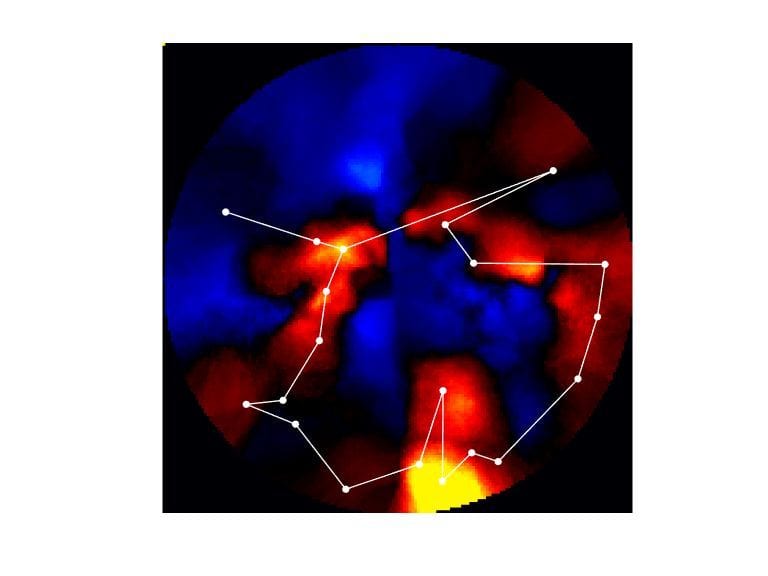How does the human visual cortex encode perceptual groups?
If you have ever stargazed under an unfamiliar sky (such as after moving from another hemisphere), you have experienced the startling ability of the human visual system to generate patterns from noise. Stars in the night sky are placed essentially at random, yet our perception readily groups them into constellations. Our research aims to understand what goes on in the brain when this happens. We use an MRI scanner to measure brain activity while volunteers watch images resembling night skies. This enables us to reconstruct where in the person’s visual field a star appeared. We seek to also reveal a signature of which stars the person perceived to be part of the same constellation: Do grouped stars cause a stronger response? And are grouped responses more synchronised across different parts of the brain?

Author: A/P Sam Schwarzkopf
Contact: s.schwarzkopf@auckland.ac.nz
Collaborators: Susanne Stoll (University College London), Haiyang Jin
Status: Funded & running
Funding details: European Research Council Starting Grant (2013-2018), University of Auckland Start-up Funds (2017 onwards)
